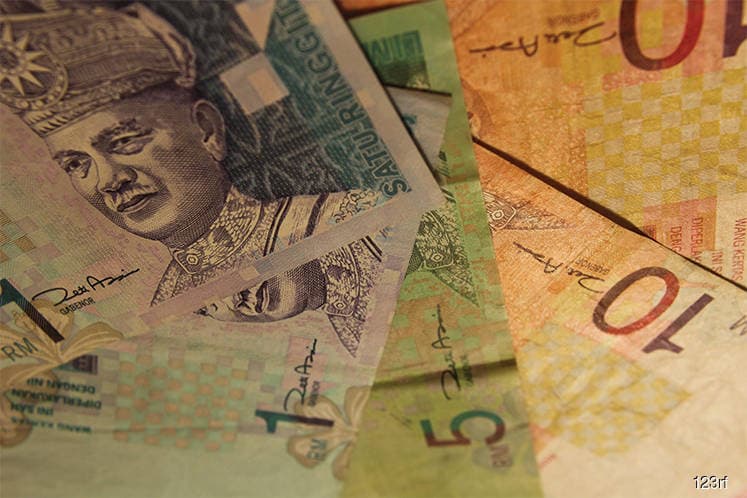
This article first appeared in The Edge Malaysia Weekly on January 15, 2018 - January 21, 2018
THE ringgit has put on quite a show in the last two weeks, strengthening to below the psychological level of 4.00 against the greenback. Last Friday, it was trading at 3.972, its strongest level since mid-July 2016.
As a weak ringgit has made Malaysian exports more competitive in recent years, its strength may be a cause for concern for some exporters. But will the local currency remain strong for long?
There are a myriad of reasons for the ringgit’s recent strength. The obvious one is the weaker sentiment towards the US dollar. The trade-weighted US Dollar Index, which measures the greenback against the currencies of a broad group of major US trading partners, has been on a downward trend. Last Friday, it touched a year’s low of 91.339 points compared with 102.2 on Feb 3, 2017.
Jameel Ahmad, global head of currency strategy and market research at FXTM, says the ringgit’s strength could also be due to the realisation of investors that it has been heavily oversold while the outstanding macroeconomic performance of the country gave it a boost of confidence.
Last year, the Malaysian economy surprised positively as it grew 5.6% year on year in the first quarter of 2017, 5.8% in 2Q2017 and 6.2% in 3Q2017.
It also cannot be denied that the ringgit’s recent strength has been aided by Bank Negara Malaysia’s requirement for exporters to convert 75% of their proceeds back into the ringgit.
“The ringgit has been boosted by the recent mandatory requirement to convert export proceeds. We think that the ringgit is influenced by a variety of factors, including the performance of the US dollar, the outlook for the economy and the central bank’s monetary policy stance,” says Affin Hwang Asset Management senior portfolio manager Ahmad Raziq Ab Rahman.
At the same time, crude oil prices and the ringgit seem to be moving in tandem again. Last week, Brent crude hit a high of US$70.05 per barrel, the highest since November 2014. This came in the wake of lower global supply as the Organisation of the Petroleum Exporting Countries and Russia committed to cutting output.
According to Ahmad Raziq, while the impact of oil prices on the ringgit has lessened over the years, the perception of a correlation still lingers.
“We think the impact of oil prices on the ringgit has lessened over the years. This is because Malaysia’s dependence on oil revenue has diminished over the years with oil-related revenue only contributing 13% to the government’s revenue in 2016 compared with 34% in 2011. The higher oil price is positive for the economy but we do not think it is the single major factor influencing the ringgit,” he explains.
Contributing factors
The experts The Edge spoke to believe the ringgit will remain strong, thanks to the country’s healthy economic fundamentals and a broad-based US dollar weakness.
“I believe the ringgit has been oversold for more than 12 months now and it is due for a deserved recovery. The macro fundamental performance of the Malaysian economy suggests that the ringgit should be trading at 3.70 against the US dollar.
“However, that would represent a significant advance fairly quickly and others might track the ringgit against a basket of different Asean currencies and suggest that it might risk being overstretched at that level,” says FXTM’s Jameel.
He believes the ringgit could bounce back to 3.60 to 3.70 this year as long as it does not “conclusively” weaken above the 4.00 level.
Ahmad Raziq, meanwhile, expects the local currency to trade between 3.90 and 4.00 against the US dollar in 1Q2018.
UOB Malaysia says in a report that the ringgit’s strength would continue to be supported by investment flow picking up post-GE14, assuming the incumbent wins.
“A key risk to this view would be a more aggressive pace of the US Federal Reserve’s rate hikes, which would push the US dollar higher and weaken crude oil,” the report reads.
It also says any weakening of the ringgit would be gradual as the current foreign ownership of Malaysian bonds and equities is relatively low. Plus, the central bank’s foreign reserves to support the ringgit stood at a larger US$102.4 billion as at end-December 2017. This comes on top of more stable onshore foreign exchange conditions following the new foreign exchange regulations introduced by Bank Negara in 2016.
Save by subscribing to us for your print and/or digital copy.
P/S: The Edge is also available on Apple's AppStore and Androids' Google Play.